After listening to an eye-opening episode of Steven Bartlett’s podcast with Dr. Yvonne Burkhart, a Ph.D. toxicologist (linked at the end of this blog for those curious), I found myself reflecting deeply on the products I use in my daily life. Dr. Burkhart’s insights about the prevalence of harmful chemicals in everyday items were both unsettling and enlightening. Motivated by her expertise, I began a journey to minimise the harmful substances in my life.
Shortly afterward, I attended a DAB. UK Events panel on sustainability in the interior design world. Once again, the conversation circled back to the dangerous chemicals hidden in many common interior design materials. It became clear that while eliminating every single toxin from our lives is virtually impossible, there are meaningful steps we can take to reduce our exposure and lessen our environmental impact.
This realisation inspired me to write this blog post. Here, we’ll explore practical ways to make more sustainable interior design choices—from selecting eco-friendly paints to finding non-toxic furnishings. We’ll also share tips on how to identify and prioritise sustainability when shopping for your home.
The Hidden Toxins in Interior Design
The world of interior design is full of surprises, and not all of them are pleasant. Many everyday products used in our homes—such as paints, varnishes, furniture, and textiles—contain chemicals that can harm both human health and the environment. Common culprits include volatile organic compounds (VOCs) found in paints, formaldehyde in wood products, and flame retardants in upholstered furniture. These chemicals can release harmful gases into the air over time, a process known as off-gassing, which contributes to indoor air pollution.
Why It Matters:
Health Concerns: Prolonged exposure to certain chemicals can lead to respiratory issues, skin irritation, or even long-term health risks.
Environmental Impact: The production and disposal of toxic materials often involve significant carbon emissions and pollution.

Steps to a More Sustainable Home
While it’s easy to feel overwhelmed by the extent of the problem, remember that small, deliberate choices can make a big difference. Here are some actionable steps to bring sustainability into your interior design choices:
- Choose Low-VOC or VOC-Free Paints
Paint is one of the easiest ways to refresh your space, but conventional paints often emit VOCs that linger for years. Opt for low-VOC or VOC-free paints, which are widely available and just as effective.
Here are three brands that are actively working toward becoming more sustainable and toxin-free in their products:
- Earthborn Paints
- Edward Bulmer Natural Paint
- Graphenstone Paints

Edward Bulmer
Opt for Natural Fibres and Fabrics
Synthetic materials such as polyester or acrylic are often treated with chemicals and are non-biodegradable. Instead, choose natural fibres like organic cotton, linen, wool, or hemp. These materials are often produced with fewer harmful chemicals and are kinder to the planet.
Did you know, wool carpets can trap and hold volatile organic compounds (VOCs), such as formaldehyde, nitrogen dioxide, and sulfur dioxide, which are often released by other household products and building materials. Wool’s protein structure binds to these harmful substances and prevents them from re-entering the air.
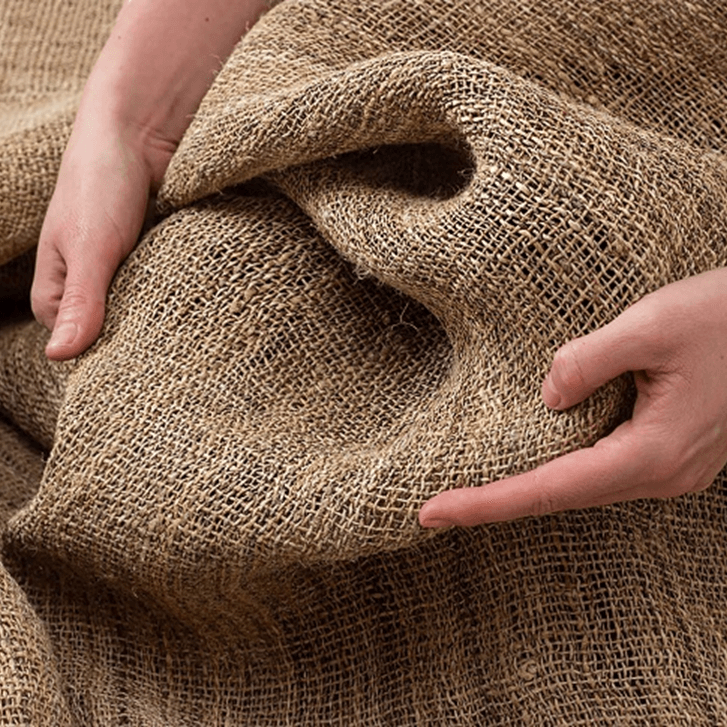
Home Of Wool
Look for Certified Sustainable Furniture
When shopping for furniture, prioritise pieces made from certified sustainable wood (look for the FSC label) or reclaimed materials. Additionally, opt for sofas and chairs upholstered with non-toxic foam or natural latex instead of polyurethane foam, which can contain flame retardants.
Here are some companies making a difference and moving towards sustainable design:
- Planted Furniture
- Swoon Editions
- Ercol
- Sustainable Furniture
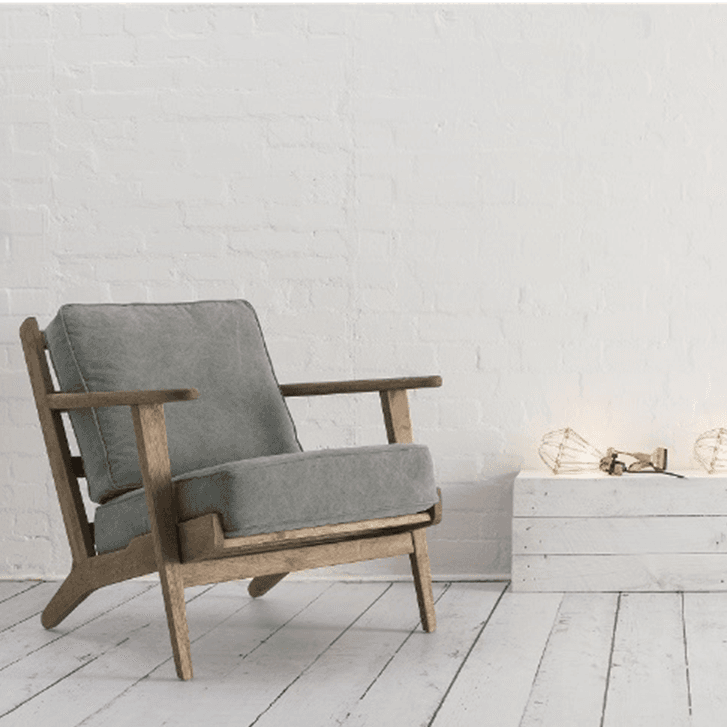
Swoon
Be Mindful of Carpets and Rugs
Wall-to-wall carpeting can trap dust and off-gas harmful chemicals. Instead, consider natural-fibre rugs made from jute, sisal, or wool. Many brands now offer rugs certified by the GoodWeave label, which ensures ethical and sustainable production.
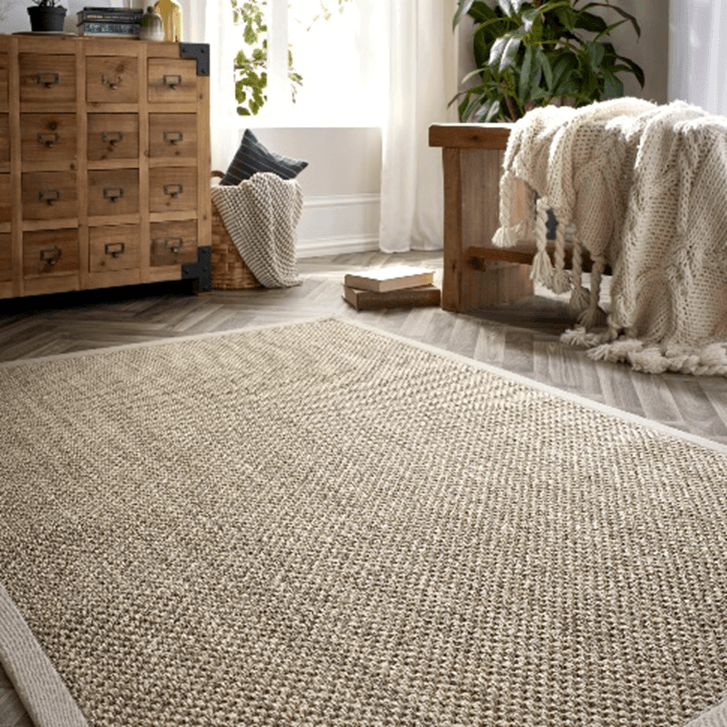
The Rug Seller
Reuse and Upcycle
Second-hand shopping isn’t just budget-friendly; it’s sustainable, too. Repurposing vintage furniture or decor reduces waste and gives your space a unique, timeless aesthetic.
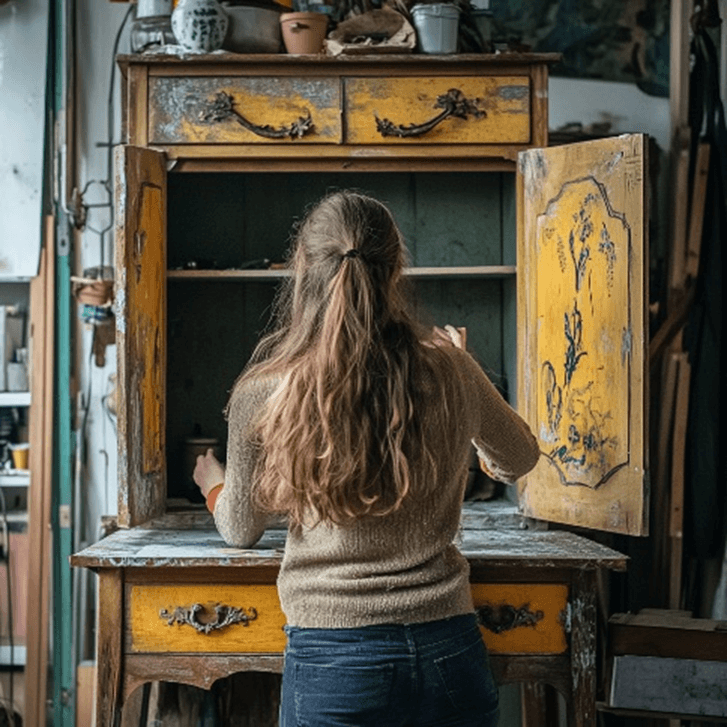
Tips for Sustainable Shopping
Navigating the world of sustainable shopping can feel like a maze, but these tips can help simplify the process:
Research Brands: Look for companies that are transparent about their production processes and materials. Certifications such as FSC (Forest Stewardship Council), OEKO-TEX, and GreenGuard are reliable indicators of environmentally friendly and sustainable practices.
Ask Questions: Don’t hesitate to ask retailers about the materials and chemicals used in their products. Brands committed to sustainability will have clear answers.
Embrace Minimalism: Sometimes, the most sustainable choice is to buy less. Focus on quality over quantity, investing in timeless pieces that will last.
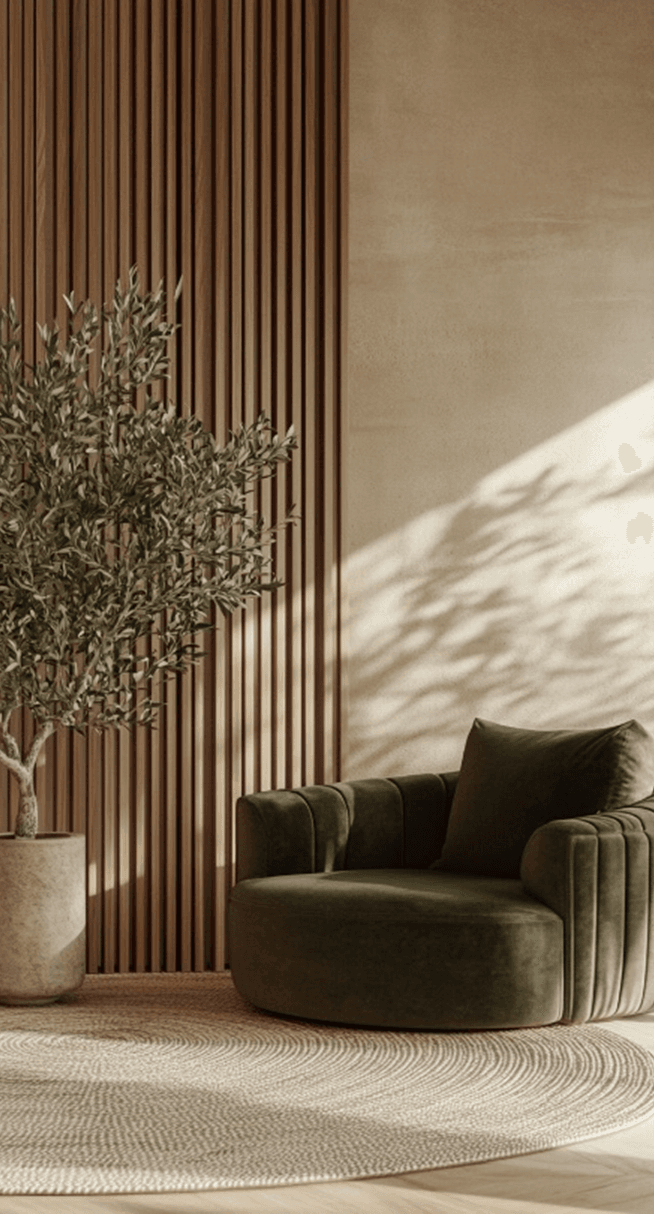
The path to sustainability in interior design isn’t about achieving perfection; it’s about making conscious, informed choices that align with your values. By reducing toxins in your home and choosing eco-friendly materials, you’re not only protecting your health but also contributing to a healthier planet.
If you’re interested in diving deeper, I highly recommend listening to Steven Bartlett’s conversation with Dr. Yvonne Burkhart. Together, small steps can lead to meaningful change. Watch it here: https://www.youtube.com/watch?v=rObAX1r8r0s
At aIDyl, we’re here to support you on your design journey. Did you know we can design homes anywhere in the world? Whether you’re in the USA, Australia, or the UK, as long as we can communicate in English, aIDyl can help turn your dream home into an affordable reality.
If you need help designing a space that combines sustainability, texture, colour, and function, check out our affordable interior design services at aIDyl. Let’s bring your home to life with texture and style!


